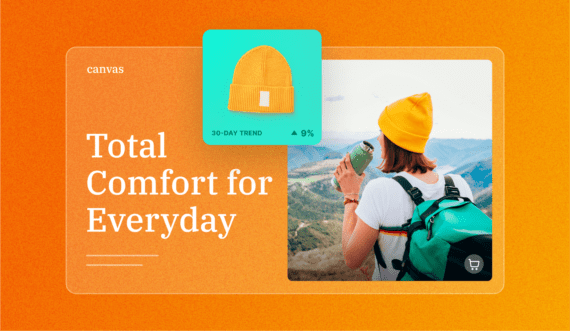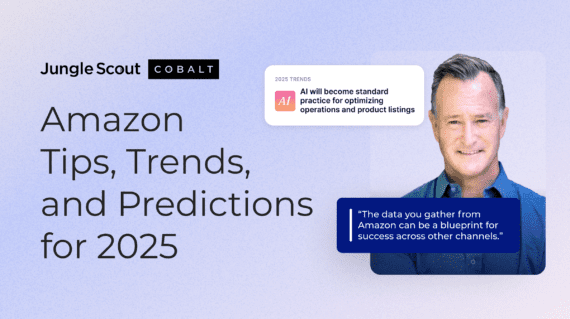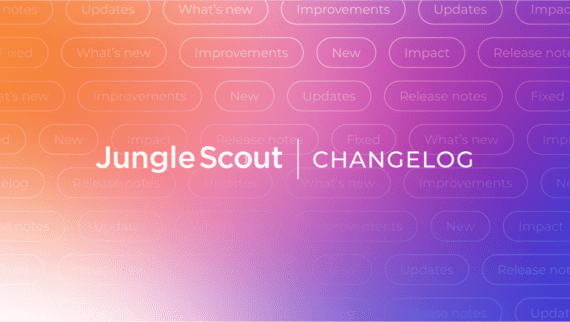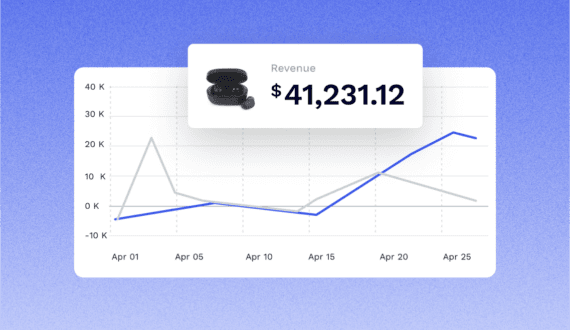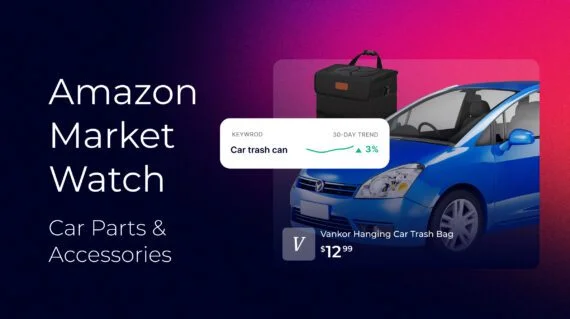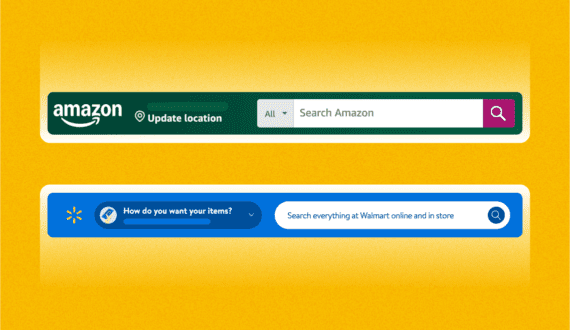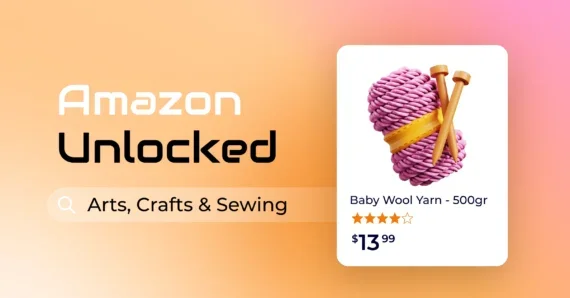Do you have a novel or song that you’ve always wanted to publish? Or maybe you’re a graphic artist at heart, with designs that would be perfect on a t-shirt?
If this sounds like you, why not make your dream a reality? There is no better time to become a content creator, with Amazon offering a few different ways to get your art in front of the masses.
This is by selling digital products on Amazon. The best part about becoming a digital content creator on Amazon is that you don’t need to have a ton of start-up capital to do it.
This article dives into how to create digital content and how to make money doing it using Amazon.
What digital products can you sell on Amazon?
From eBooks to songs to t-shirt designs, Amazon offers plenty of avenues for aspiring entrepreneurs to make money on their platform. Here are a few digital products you can sell on Amazon:
1. eBooks
If you are interested in writing books, Amazon offers at least three ways to sell books, two of which are strictly digital. You can sell physical copies of the books on Amazon,or you can sell ebooks through Amazon’s Kindle Direct Publishing (KDP) which offers two ways to do it: digital and “print on demand.”
Whether you’re an author of short stories, low-medium content books, or educational content such as a course, KDP is a great, low-cost option to get your books published and in front of millions of potential readers.
READ MORE | Amazon Kindle Direct Publishing (KDP) 2024 Guide
2. Graphics and digital art
If you’re an artist or graphic designer with a unique piece of art, you can upload your images to Amazon Merch on Demand and see your work on a printed t-shirt and other products like mugs, bags, or pillows.
Like KDP and TuneCore, Amazon’s print-on-demand service doesn’t require you to own inventory in order to sell products. All you have to do is wait for an order to come through, Amazon prints and ships the product to the consumer, and you earn a royalty for the sale.
3. Music
For musicians, Amazon offers TuneCore, which is a part of Amazon Music. Through TuneCore, musicians can upload their songs and make them instantly available for Amazon, iTunes, Spotify, Google Play, and another 150+ stores around the world.
4. Apps and games
The Amazon App store allows sellers to distribute their app or game to millions of Amazon devices in over 230 countries. Your app or game will be available on Amazon Fire TV, Amazon Fire tablets, and the Amazon Appstore on Windows 11.
Amazon makes it simple to get started selling your own app or game with the Appstore. Simply create a free Amazon Developer account by completing the registration form. Once your account is approved, you will have access to Amazon’s API where you can begin publishing your apps.
5. Audiobooks
With Audible, anyone can create and self-publish an audiobook on Amazon through Audible’s Audiobook Creation Exchange. Similar to KDP, once you upload your audiobook, it will be available to purchase and download for all Audible customers.
6. Video
Do you create and produce movies, short films, or shows? Offering your creations on Prime Video Direct can be a great way to reach larger audiences through Prime Video.
If you would like to make your videos available for rent or purchase on Prime Video, sign up for a free Prime Video Direct account to get started.
Note: There are other ways to sell your creations on Amazon, like selling fine art (restricted) or handmade. But, for this article, we’re focusing solely on digital art.
Benefits of selling digital products on Amazon
There are many benefits in choosing to sell digital products versus launching physical products on Amazon. For one, the upfront cost is much lower than if you were to invest into inventory. Let’s go over the other benefits to selling digital products on Amazon.
- Wide customer base. Gain access to millions of potential customers with Amazon’s built-in customer base on all platforms. For example, with KDP or Merch on Demand, your digital products will be listed on Amazon.com.
- Trust and credibility. Customers love and trust Amazon because they know their purchase will be protected in case something goes wrong. Leverage their reputable brand to build trust with buyers.
- Instant gratification. With most of these options (minus Amazon Merch on Demand), customers can access your digital products immediately after purchase.
- No inventory costs. Since digital products are intangible, there’s no need to invest in physical inventory like you would with a regular Amazon FBA business.
- Automated delivery. Amazon handles the distribution of digital files and printing of your merch or books, making it hassle-free for sellers.
- Global availability. Reach customers around the world without the need for a physical presence in multiple countries.
- Easy scalability. With these platforms, you can list as many products as you want to sell. Expand your digital product offerings without the constraints of physical production.
How to sell digital products on Amazon
You may know exactly what you want to write, produce, or design… or you may simply know you want to use your knowledge and creativity to craft something, but you don’t know what might sell.
No matter what your method of content creation is, you will want to create content that people actually care about — and will pay for.
For some, this can turn into an endless quest for validation. Fortunately, there are a few hacks you can use to figure out what sort of content people want before you even create it.
1. Research opportunities or validate ideas
Pablo Picasso once said that “great artists don’t borrow. They steal.” While I won’t advocate for plagiarism, I will suggest that you look at what is already working and try to emulate — and improve upon — those concepts.
But how do you know what’s working currently, or how do you validate an idea you have? The easiest way to find that out is to check Amazon itself.
- Do a search on Amazon for the subject or type of content you want to create.
- Use a tool like Jungle Scout’s Chrome extension to see how well each of the topics on that page are performing.
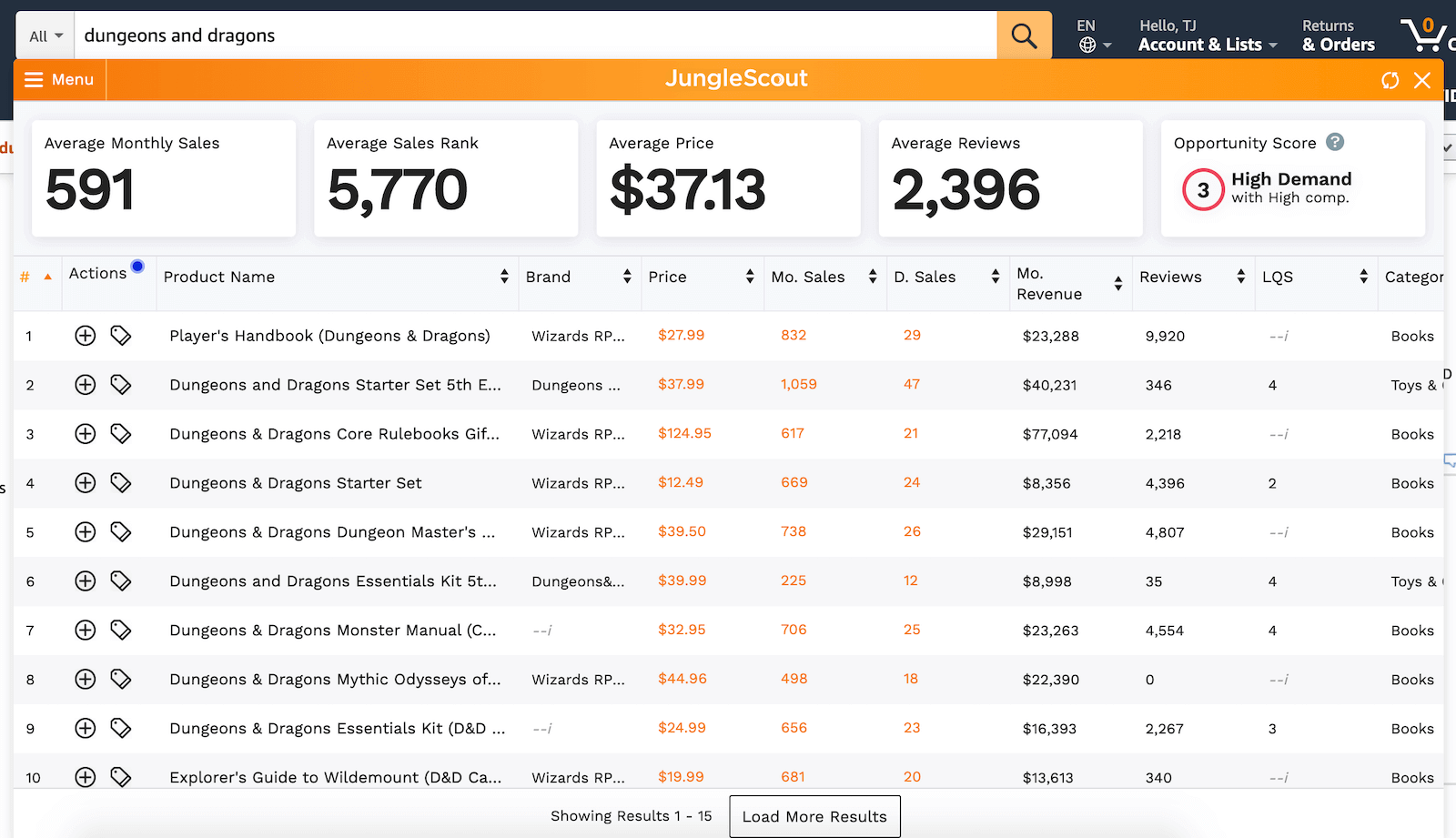
- Check out the top performing listings. Read the reviews for that listing to learn how the product could be improved.
- Craft similar content with the requested improvements.
2. Create your content — and a feedback loop
Once you know where to start with content creation, start creating. Don’t worry about making it perfect just yet.
- Create the most perfect version of your product, but one that may not have all the bells-and-whistles that you want. This will be called your M.V.P. or minimum viable product.
- Make sure that you get as many people as you can to read/listen/view the M.V.P.
- Start collecting feedback from those who experience your M.V.P. Look for common threads in their insights.
- Make iterations to your next piece of content based on the feedback you received.
- Repeat the process.
The faster you perfect your feedback loop, the faster you will create an audience that’s willing to spend money on you every month.
3. List your products on Amazon
Depending on which type of digital product you’re selling, will determine how you list your product on Amazon. For example, if you plan to sell on eBook, you will need to sign up for a KDP account. Use the links above in the “What digital products to sell on Amazon” to sign up for the platform you want to offer digital products on.
Once you’ve signed up for your respective account, these are the next steps you need to take to get up and running:
- Submit. Once your content is designed/written/produced, submit it to the corresponding program for approval.
- Launch. Then, when you get the okay, list your book, song, or design.
- Advertise. If available on the platformuse Amazon Advertising to promote and advertise your products on Amazon. Also be sure to advertise off Amazon using social media, email, Google or Facebook ads.
Find profitable products and automate your listings with Jungle Scout.
Leverage Jungle Scout Extension and Listing Builder to sell digital products on Amazon.
Best practices for selling digital products on Amazon
As with all products sold on Amazon, there are rules around the digital content you create and sell.
These are the dos and don’ts for books, music, and graphic art.
KDP
The most important thing to know about KDP is that Amazon has a zero-tolerance policy when it comes to books that “advertise, promote, mislead, or [don’t] accurately represent [its] contents.”
These are KDP’s key dos and don’ts, to help you make sure you stay on the right side of that policy (though it’s still a good idea to read the full guidelines):
- Identify and correct any errors in your book before uploading it to the platform. This includes typos, duplicated text, and grammatical errors. You can use the Kindle Previewer to help make sure you’ve caught everything.
- Use and create metadata correctly so your book can be found in Amazon’s search results. Plus, if you run afoul of the metadata guidelines (e.g. including a URL or mentioning another book), not only do you risk Amazon removing your content, the misinformation could also cause you to lose sales.
- Create a high-quality cover to entice potential customers to buy your book. Make sure the image isn’t blurry, that it doesn’t mention any promotions, and that it isn’t too large to display properly on the finished product.
- Post content that is Kindle-appropriate. For example, puzzles, coloring books, and blank journals are better-suited for print-on-demand.
- Format your book properly, to ensure the best reading experience for your readers. Some formatting issues to avoid are: forced alignment, single spacing after each paragraph, and in-line page numbering. You should also upload your file in DOC, DOCX, or HTML form.
TuneCore
In order to distribute your music, you need to follow TuneCore’s style guide to the letter. If your artwork doesn’t comply with those formatting requirements, other online music platforms might refuse to sell your content.
So, to make sure your music is accepted, your cover art must*:
- Be uploaded as a JPG, PNG, or GIF image file (you must own the rights to the picture).
- Be square and at least 1600 x 1600 pixels in size (exactly 1600 x 1600 if you’re adding to Amazon’s On Demand store).
- Have a resolution of at least 72 dpi (dots per inch), though 300 dpi is ideal.
- Be in RGB color mode (for both color and black and white images).
* While you can upload your cover art without any script, if you do want to incorporate text, it can only include the title of your release and the artist’s name. Also, they must be displayed exactly as they were entered into TuneCore.
As for what you must not do, don’t:
- Include any pricing, email addresses, URLs, or contact information.
- Indicate that your release is a physical or digital product (e.g. “CD” or “Digital Exclusive”).
- Submit artwork that is blurry or that is cutoff (either the image itself or any text included on the photo).
- Compress your artwork into one corner, leaving the rest of your image with white space.
- Reference any digital stores (e.g. iTunes) or display their logos.
Amazon Merch on Demand
When you’re given an opportunity to sell your artwork to a large audience, the last thing you want to do is mess it up. That’s why, if you’ve decided to go the merch route, you need to follow the guidelines closely.
For reference, these are some of Merch’s dos and don’ts:
- Do use your own original artwork, as long as it doesn’t violate someone else’s copyright or trademark.
- Don’t upload designs that are: pornographic, exploit children, or use profanity.
- Do create artwork that is age-appropriate, if you’re planning on selling youth sizes.
- Don’t promote hate, violence, or human tragedy in your designs.
- Do make sure any spelling included with your design matches the spelling of that same text in your product listing.
- Don’t include metadata that is unrelated to your design, requests reviews, or displays external contact information.
- Do create designs that use RGB colors, have print dimensions of 300 dpi, and are a maximum of 25MB.
- Don’t use images that contain a watermark, are low resolution, and/or blurry.
Audible
In order for your audiobooks to be accepted to sell on Audible, you must follow the ACX Audio Submission Requirements. Before spending time creating and submitting your audio files, take some time to read through the requirements and guidelines.
For reference, these are some of Audible’s dos and don’ts:
- Your submitted audiobook must be consistent in overall sound and formatting
- Your submitted audiobook must include opening and closing credits
- Your submitted audiobook must be comprised of all mono or all stereo files
- Your submitted audiobook must include a retail audio sample that is between one and five minutes long
- Your audiobook sample must not include explicit material.
- Submitted audiobooks may not contain both mono and stereo files. Stereo files must not be joint-stereo.
- Each file must be no longer than 120 minutes.
Amazon Developer
Before submitting your app for approval, make sure your app adheres to the Amazon Appstore Content Policy. If your app violates any of Amazon’s guidelines, it will not be published to the app store.
For reference, here are some of general dos and don’ts for Amazon Developer:
- Amazon’s Appstore is a family friendly environment; if your app does not have adequate safeguards in place for young customers, your app will be rejected or suppressed from the Amazon Appstore.
- Refrain from using offensive content in your app.
- Each app must comply with all applicable laws.
- Your apps must not infringe on any intellectual property rights of a third party.
Prime Video Direct
All content submitted for publication on Prime Video Direct must adhere to Prime Video Content Policy Guidelines. Even after your content is published, Prime Video conducts regular reviews of the content on its platform to determine viewing behavior and that you’re still following the guidelines.
For reference, these are some of Prime Video Direct’s dos and don’ts:
- Ensure your content does not violate trademark or copyright laws.
- Amazon does not accept public domain content or content that is not differentiated from another title.
- Prime Video does not accept content that isn’t normally considered feature-length movies or TV shows such as user-generated content, product reviews, product unboxing, compilation videos, news segments, vlogs, health videos, YouTube videos, etc.
Launch your digital products on Amazon
So when’s the best time to get started? Now, of course! Start compiling a list of things that you could share online and the types of digital content that can come from it.
As soon as you have a good idea of the awesome content you can provide, start doing a little research using the Jungle Scout extension.
Once you’ve identified your best opportunities, start creating, then start selling!
Want to learn more about how you can use Jungle Scout to launch, grow, and run your Amazon business? Click the “Learn More” button below!
Start selling digital products on Amazon.
Learn more about how you can use Jungle Scout to launch, grow, and run your Amazon business.
Brian Connolly is an Amazon seller, ecommerce expert, and writer for Jungle Scout. He lives in the New Jersey Shore area with his wife and cat. When he isn’t writing advice online for aspiring and experienced Amazon sellers for Jungle Scout, he spends his free time boating, fishing, and selling boating-themed items on his Amazon business.



